Leather Dancing Shirt Or Tunic Item Number: E60241-0 from the National Museum of Natural History
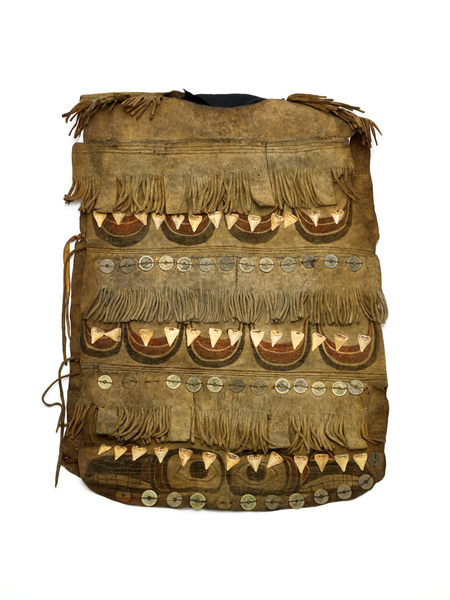
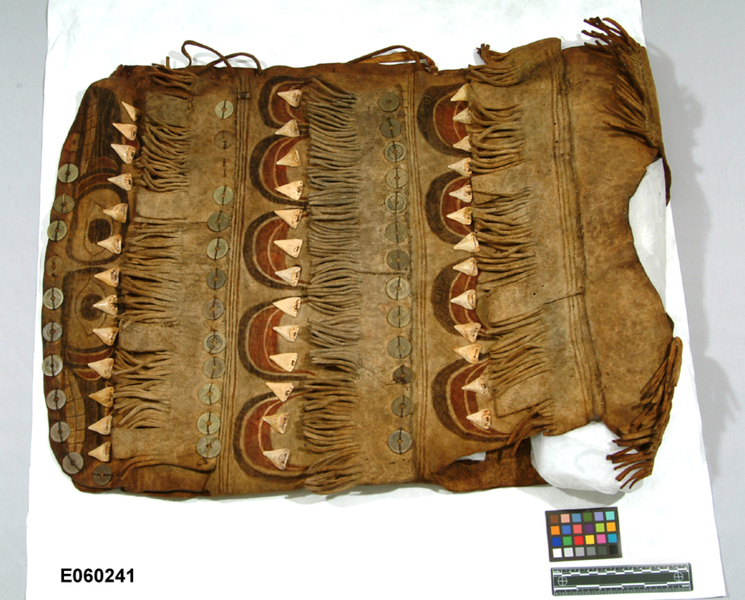
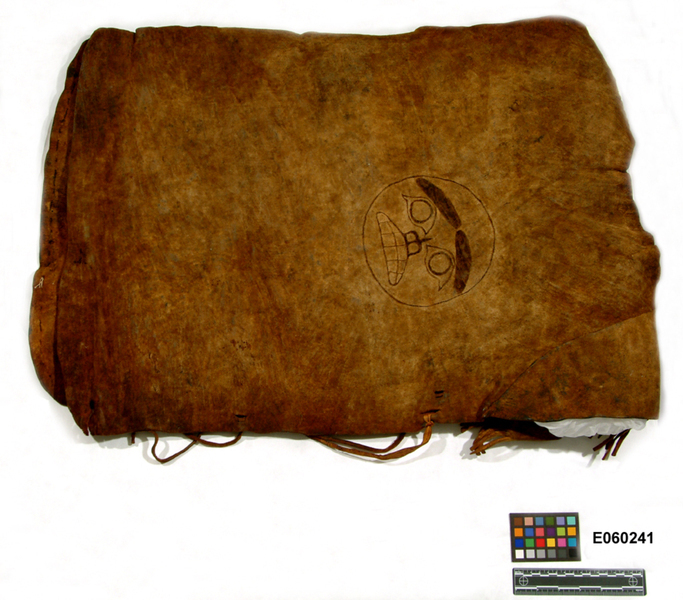
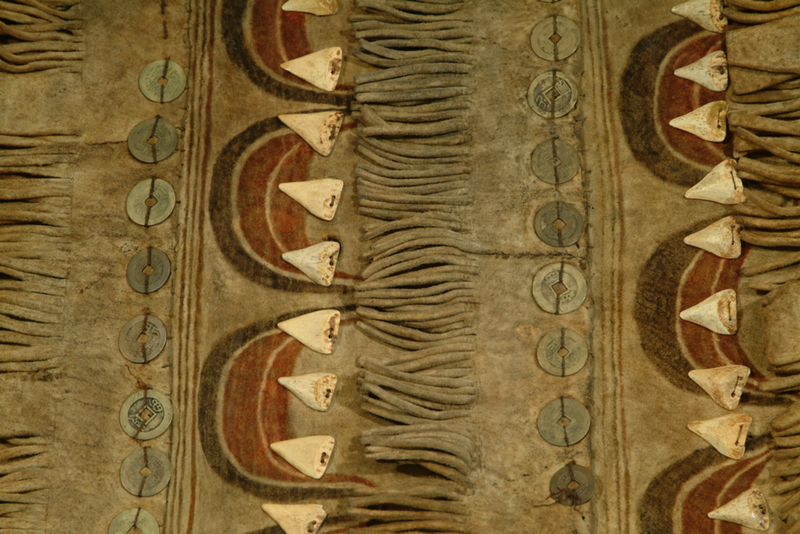
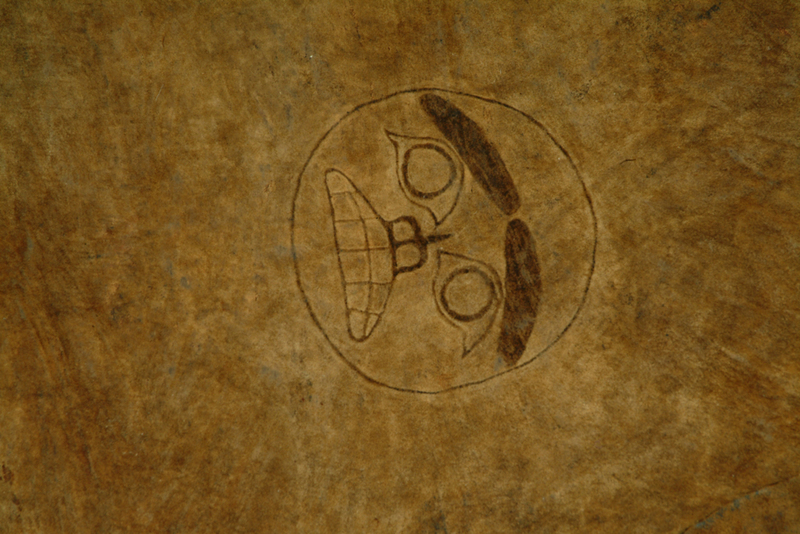
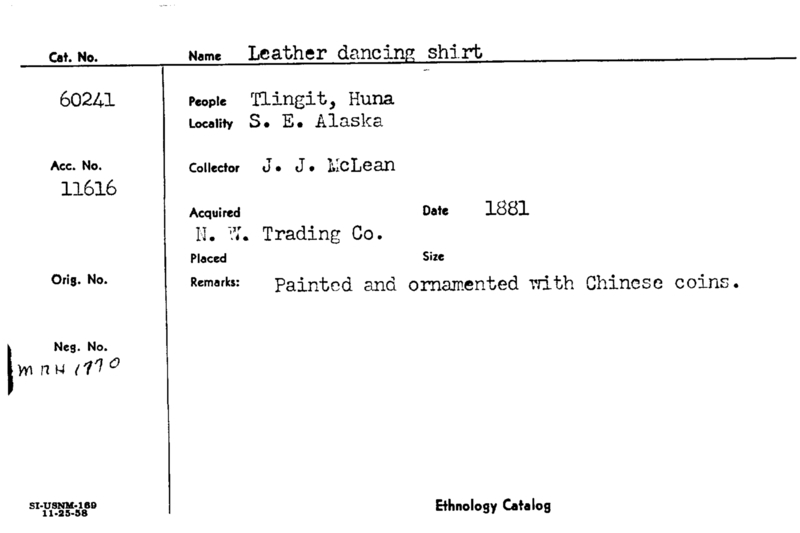
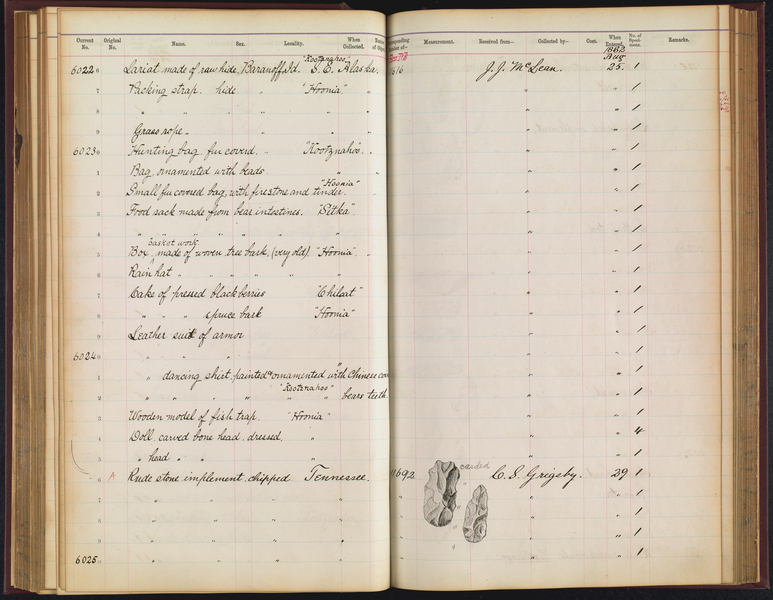
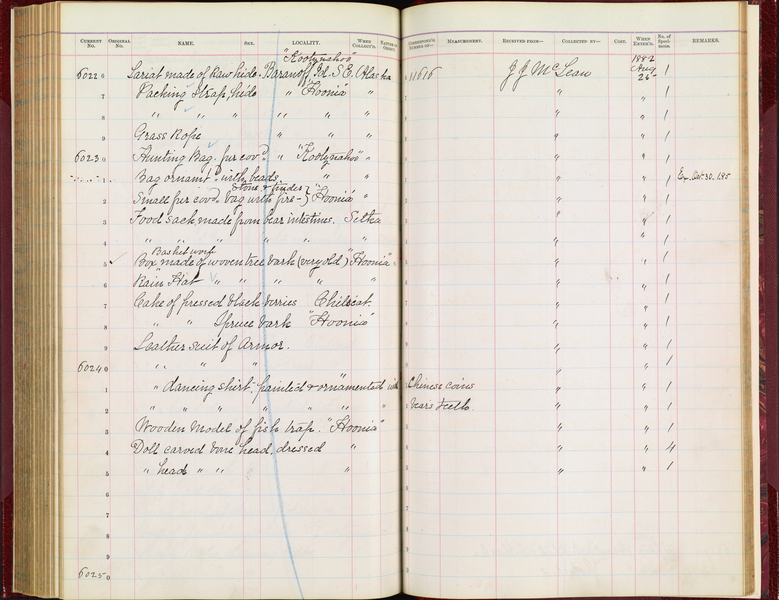
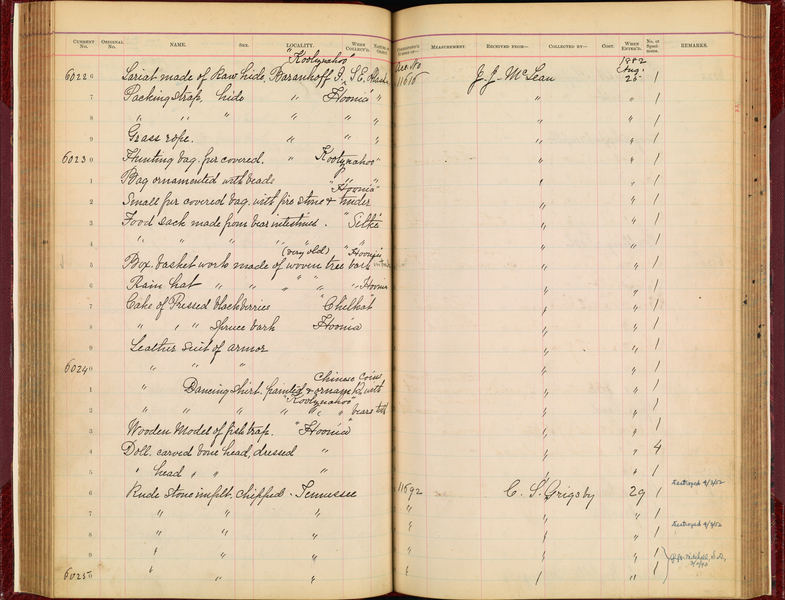
Notes
FROM CARD: "PAINTED AND ORNAMENTED WITH CHINESE COINS. LOAN: CROSSROADS SEP 22 1988. ILLUS.: CROSSROADS OF CONTINENTS CATALOGUE; FIG.308, P. 231. LOAN RETURNED: JAN 21 1993." Crossroads caption identified as "The painted hide armor tunic ... is ornamented with carved bone "sharks' teeth" and Chinese coins. Chinese coins were widely traded on the Northwest Coast, not surprising given that the traders' principal marker for their furs was China."This object is on loan to the Anchorage Museum at Rasmuson Center, from 2010 through 2027.Source of the information below: Smithsonian Arctic Studies Center Alaska Native Collections: Sharing Knowledge website, by Aron Crowell, entry on this artifact http://alaska.si.edu/record.asp?id=129 , retrieved 3-12-2012: Tunic, Tlingit This fringed moose-hide tunic resembles leather armor but is thinner and more decorated than what a fighter would wear in battle. A warrior's tunic would also be open on one side to allow freedom for his weapon arm. As a dance garment the tunic might have been worn for the ceremonial reenactment of war. Shamans also dressed themselves in armor to portray yek (helping spirits) who were "spirits of above," that is, warriors killed in battle. The tunic is ornamented with fossil sharks' teeth, both real and replicated in carved bone, and with Chinese coins imported by traders. "For a while I thought that it was an armor vest, but it wouldn't be made like that with all the fringe and ornaments. It must be for dancing.... The only other thing it could be is x'áan koonáayee, a commander's leather armor." -George Ramos (Tlingit), 2005.
Item History
- Made in Hoonah, Chichagof Island, Alaska, USA
- Collected by Sgt. John J. McLean in Hoonah, Chichagof Island, Alaska, USA during 1881
- Received on June 23, 1882
What
- Name
- Leather Dancing Shirt Or Tunic
- Identification Number
- E60241-0
- Type of Item
- tunic
Who
- Culture
- Tlingit and Hoonah
- Field Collector
- Sgt. John J. McLean
Where
- Holding Institution
- National Museum of Natural History
- Made in
- Hoonah, Chichagof Island, Alaska, USA
- Collected in
- Hoonah, Chichagof Island, Alaska, USA
When
- Collection Date
- during 1881
- Acquisition Date
- on June 23, 1882
Other
- Accession Number
- 011616